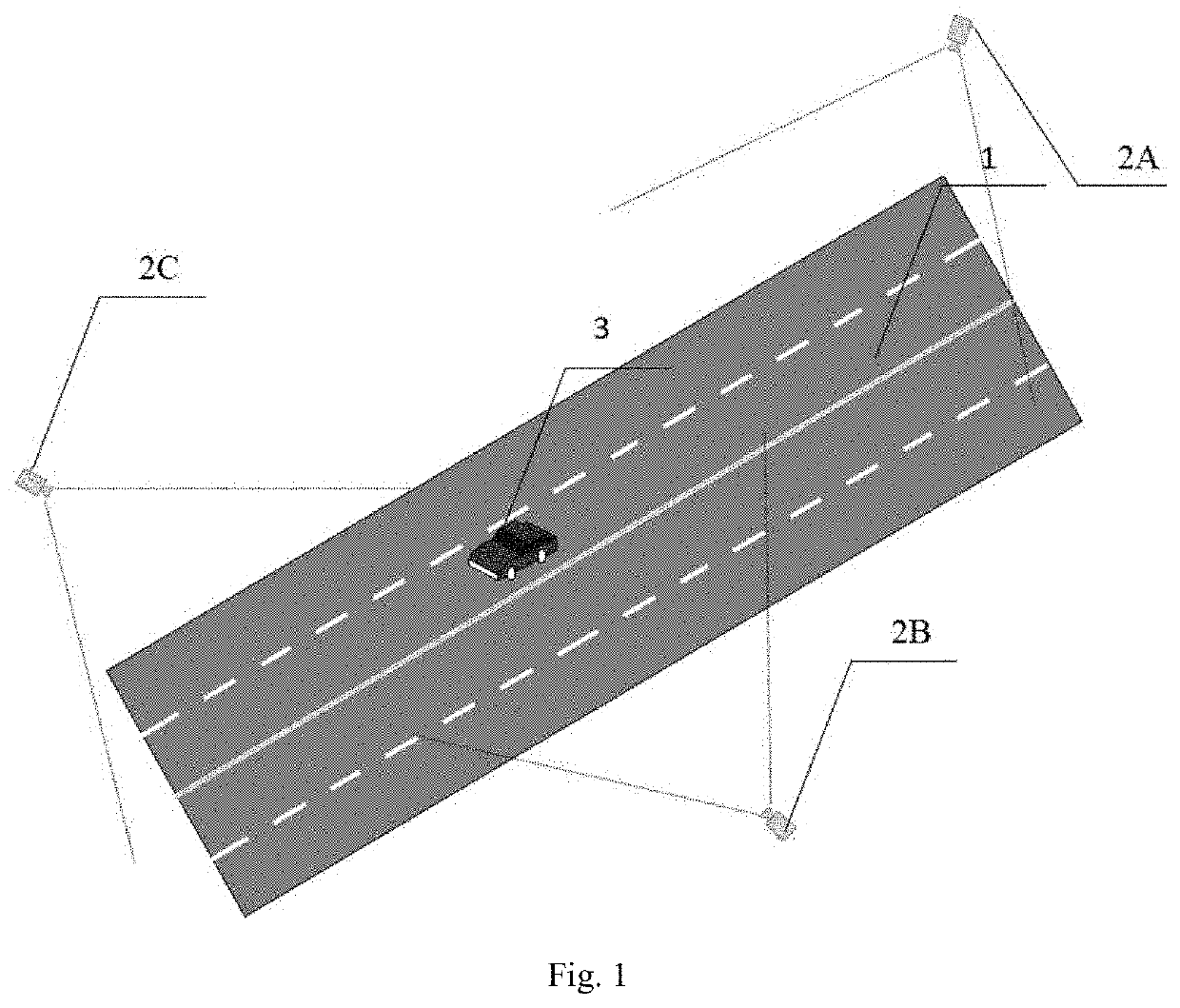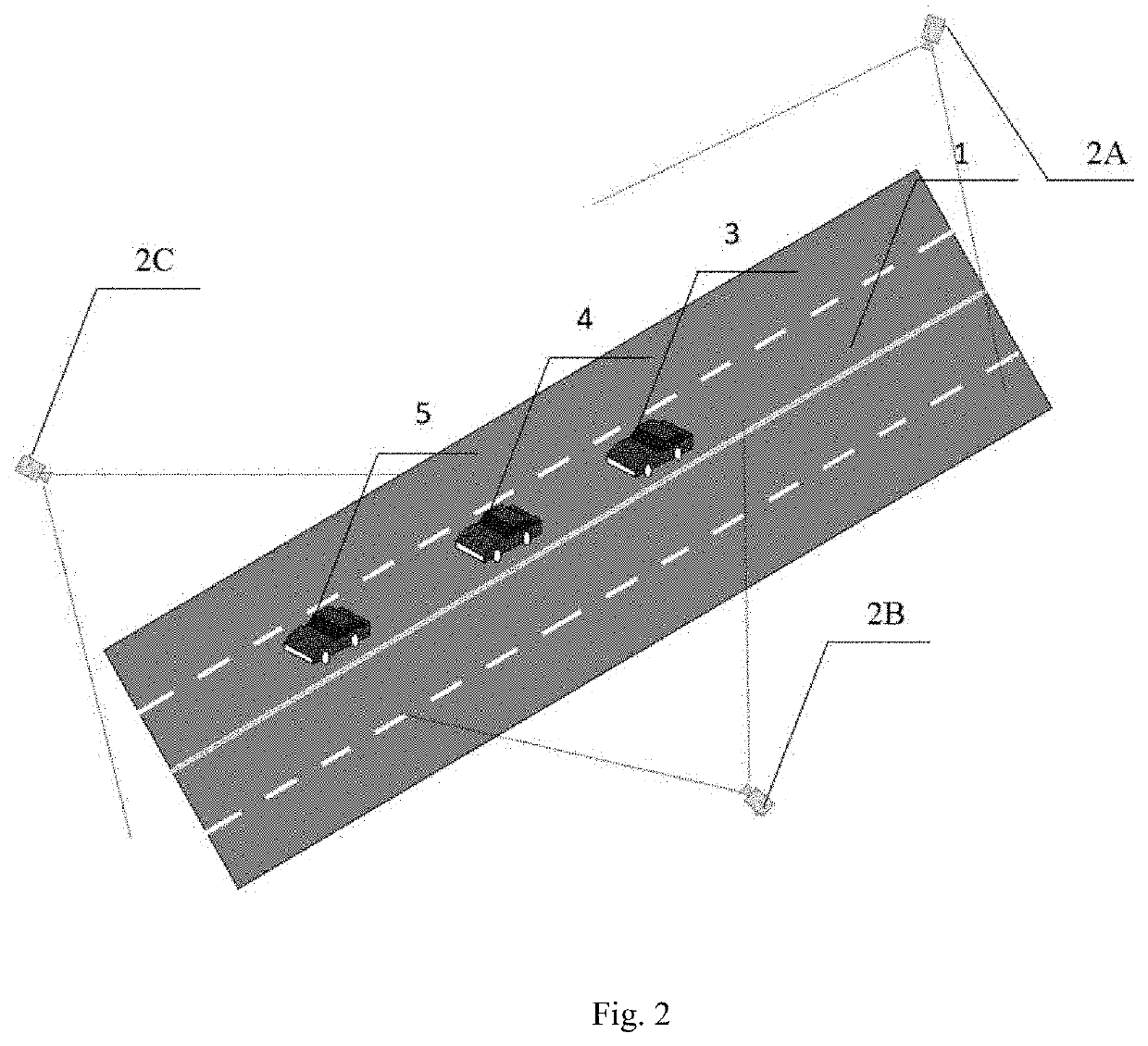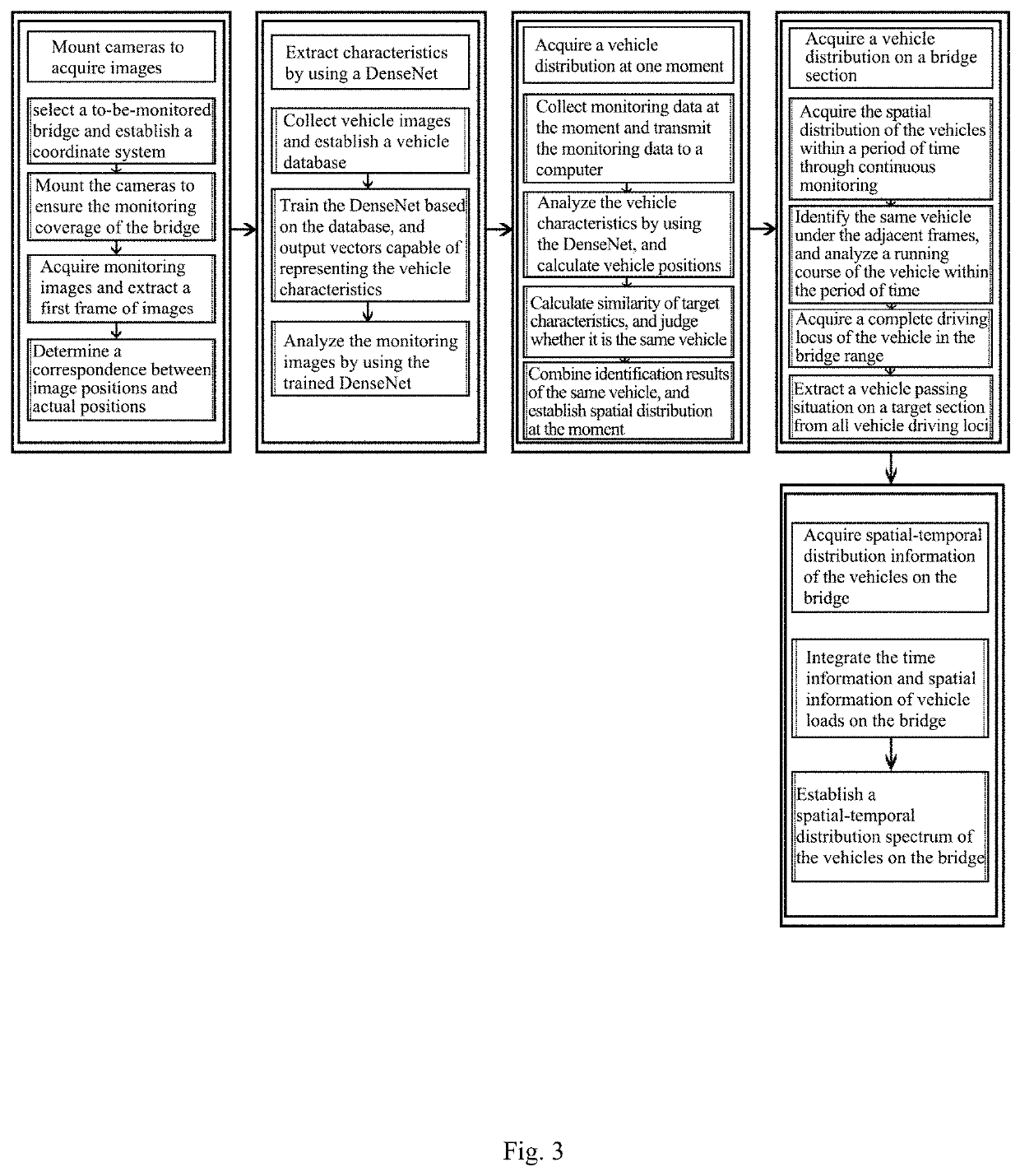Method for identifying spatial-temporal distribution of vehicle loads on bridge based on densely connected convolutional networks
- Summary
- Abstract
- Description
- Claims
- Application Information
AI Technical Summary
Benefits of technology
Problems solved by technology
Method used
Image
Examples
Embodiment Construction
[0048]Specific embodiments of the present invention are further described below in combination with the accompanying drawings.
[0049]A method for identifying spatial-temporal distribution of vehicle loads on a bridge based on a DenseNet includes the following steps:
[0050]A. Mounting the cameras;
[0051]A1. Selecting a to-be-monitored bridge, determining a start position and an end position of the bridge 1, establishing a coordinate system by adopting a span direction as an axle x, a bridge width direction as an axle y and the center of the start position as an origin, and quantifying the position information on the bridge;
[0052]A2. Mounting the cameras 2 on the bridge according to objective conditions of the bridge such as length, width and upper structures to monitor the bridge;
[0053]A3. Acquiring real-time monitoring images of the bridge by using the cameras, intercepting a first frame of images, and marking time for the subsequent monitoring images by using the time as a base point;...
PUM
 Login to View More
Login to View More Abstract
Description
Claims
Application Information
 Login to View More
Login to View More - R&D
- Intellectual Property
- Life Sciences
- Materials
- Tech Scout
- Unparalleled Data Quality
- Higher Quality Content
- 60% Fewer Hallucinations
Browse by: Latest US Patents, China's latest patents, Technical Efficacy Thesaurus, Application Domain, Technology Topic, Popular Technical Reports.
© 2025 PatSnap. All rights reserved.Legal|Privacy policy|Modern Slavery Act Transparency Statement|Sitemap|About US| Contact US: help@patsnap.com



